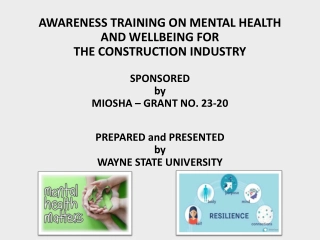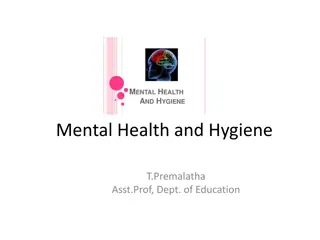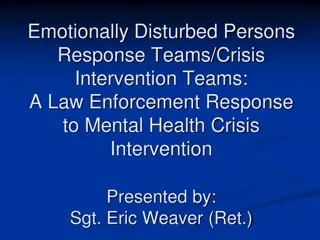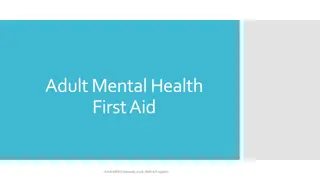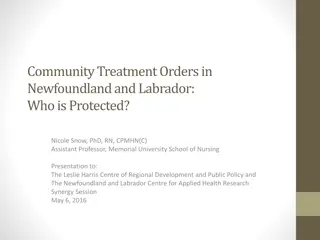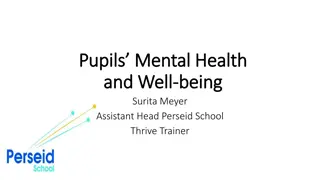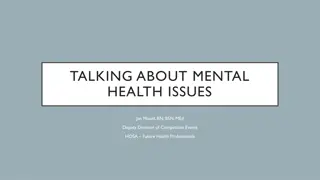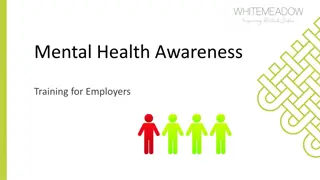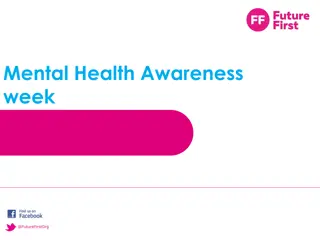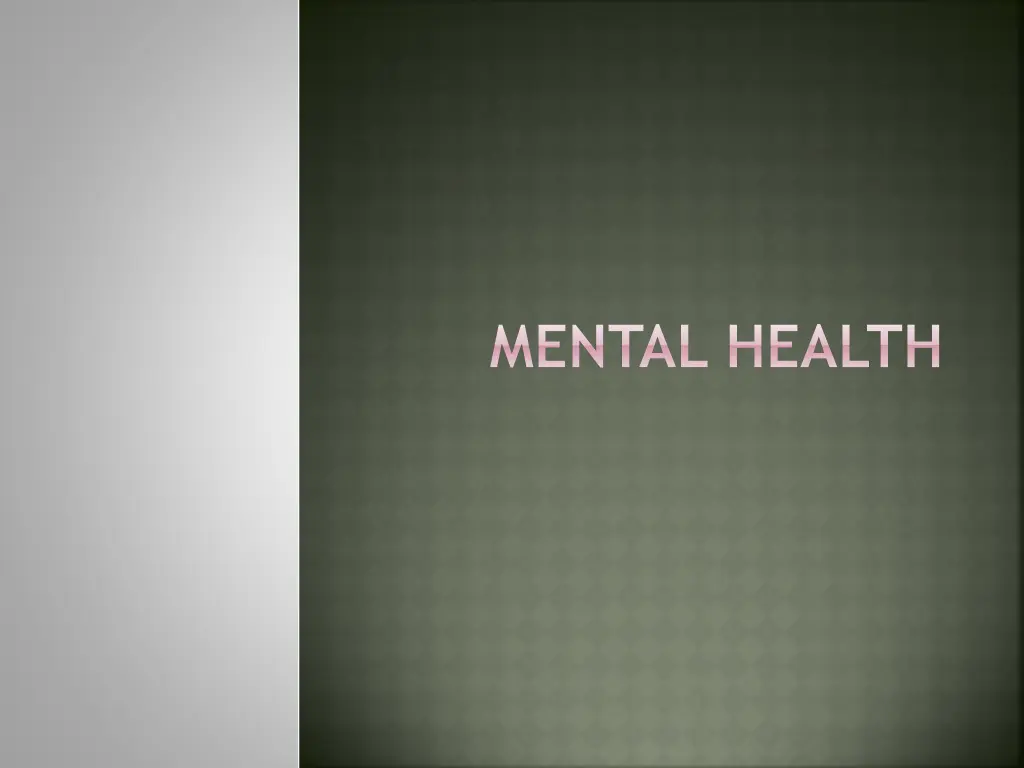
Understanding Mental Health and Well-being
Explore the concept of mental health, strategies for dealing with stress and depression, characteristics of mentally healthy individuals, Maslow's Hierarchy of Needs, and the impact of deficits in fulfilling essential needs in various life stages.
Uploaded on | 2 Views
Download Presentation

Please find below an Image/Link to download the presentation.
The content on the website is provided AS IS for your information and personal use only. It may not be sold, licensed, or shared on other websites without obtaining consent from the author. If you encounter any issues during the download, it is possible that the publisher has removed the file from their server.
You are allowed to download the files provided on this website for personal or commercial use, subject to the condition that they are used lawfully. All files are the property of their respective owners.
The content on the website is provided AS IS for your information and personal use only. It may not be sold, licensed, or shared on other websites without obtaining consent from the author.
E N D
Presentation Transcript
MENTALLY HEALTHY PERSON . . . Define on your own . . . Someone who is able to deal with life s challenges without becoming impaired or overwhelmed by them. How do you deal with adversity and manage stress? An estimated 50% of Americans experience symptoms of depression at some point in their life. What are potential symptoms?
WHAT ARE OPTIONS YOU HAVE TO HELP ALLEVIATE THESE SYMPTOMS OF STRESS OR DEPRESSION?
OPTIMISM Positive Psychology: focuses on positive emotions, character strengths, and conditions that create happiness. On your own list out 10 characteristics of mentally healthy people: Areas of strength? Areas to work on?
MASLOWS HIERARCHY OF NEEDS Self-Actualization: The state attained when a person has reached his or her full potential. A self-actualized person is realistic, self-accepting, self- motivated, creative, and capable of intimacy. Self - Actualization Self - Esteem Love & Belonging Safety & Security Physiological Needs
HIERARCHY OF NEEDS The hierarchy has five levels: Physiological Needs: oxygen, water, protein, salt, sugar, calcium and other minerals and vitamins, shelter and sleep etc. Safety Needs: security, stability, protection from physical and emotional harm Belongingness & Love Needs: affection, belonging, acceptance, friendship, community Esteem Needs:(Internal ones are need for self-respect, confidence, autonomy, and achievement. External ones are need for respect of others, status, fame, glory, recognition and attention.) Maslow feels these are the roots to many, if not most of our psychological problems. Self-actualization: (doing that which maximizes one s potential and fulfills one s innate aspirations)
DEFICIT If you don t have enough of something you have a deficit (need) Maslow's hierarchy seems to follow the life cycle. A baby's needs are almost entirely physiological. As the baby grows, it needs safety, then love. Toddlers are eager for social interaction, attention and affection. Teenagers are anxious about social needs, young adults are concerned with esteem and only more mature people transcend the first four levels to spend much time self-actualizing. Under stressful conditions, or when survival is threatened, we can regress to a lower level need.
1 PAGE WRITE UP Who do you admire most? Or who do you look up to as a role model? Actual person in your life (not a celebrity) What qualities does this person have that makes them admirable? Do you see yourself as role model? Why? What qualities do you possess that make you a good role model?

